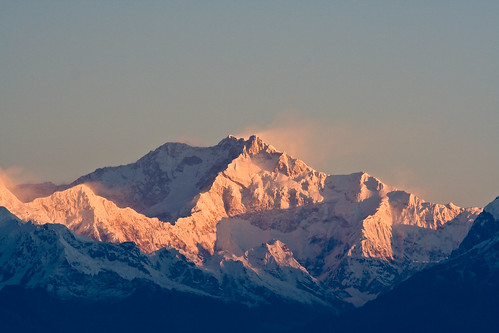
Monday, February 15, 2010
Manish Mannan
hello Friends this is manish mannan from Noida, Just Now i have posted about Indian Economy then what blief are you in What is the main Reason Of growth
i reallly think there sacrifice lead us in this position
i really thanks to them from my heart
thanks
plz do farword your opinion about them
i reallly think there sacrifice lead us in this position
i really thanks to them from my heart
thanks
plz do farword your opinion about them
Indian Economy Overview
India has been one of the best performers in the world economy in recent years, but rapidly rising inflation and the complexities of running the world’s biggest democracy are proving challenging.
India’s economy has been one of the stars of global economics in recent years, growing 9.2% in 2007 and 9.6% in 2006. Growth had been supported by markets reforms, huge inflows of FDI, rising foreign exchange reserves, both an IT and real estate boom, and a flourishing capital market.
Like most of the world, however, India is facing testing economic times in 2008. The Reserve Bank of India had set an inflation target of 4%, but by the middle of the year it was running at 11%, the highest level seen for a decade. The rising costs of oil, food and the resources needed for India’s construction boom are all playing a part.
India has to compete ever harder in the energy market place in particular and has not been as adept at securing new fossil fuel sources as the Chinese. The Indian Government is looking at alternatives, and has signed a wide-ranging nuclear treaty with the US, in part to gain access to nuclear power plant technology that can reduce its oil thirst. This has proved contentious though, leading to leftist members of the ruling coalition pulling out of the government.
As part of the fight against inflation a tighter monetary policy is expected, but this will help slow the growth of the Indian economy still further, as domestic demand will be dampened. External demand is also slowing, further adding to the downside risks.
The Indian stock market has fallen more than 40% in six months from its January 2008 high. $6b of foreign funds have flowed out of the country in that period, reacting both to slowing economic growth and perceptions that the market was over-valued.
It is not all doom and gloom, however. A growing number of investors feel that the market may now be undervalued and are seeing this as a buying opportunity. If their optimism about the long term health of the Indian economy is correct, then this will be a needed correction rather than a downtrend.
The Indian government certainly hopes that is the case. It views investment in the creaking infrastructure of the country as being a key requirement, and has ear-marked 23.8 trillion rupees, approximately $559 billion, for infrastructure upgrades during the 11th five year plan. It expects to fund 70% of project costs, with the other 30% being supplied by the private sector. Ports, airports, roads and railways are all seen as vital for the Indian Economy and have been targeted for investment.
Further hope comes from the confidence of India’s home bred companies. As well as taking over the domestic reins, where they now account for most of the economic activity, they are also increasingly expanding abroad. India has contributed more new members to the Forbes Global 2000 than any other country in the last four years.
Recent Growth Trends in Indian Economy
India’s Economy has grown by more than 9% for three years running, and has seen a decade of 7%+ growth. This has reduced poverty by 10%, but with 60% of India’s 1.1 billion population living off agriculture and with droughts and floods increasing, poverty alleviation is still a major challenge.
The structural transformation that has been adopted by the national government in recent times has reduced growth constraints and contributed greatly to the overall growth and prosperity of the country. However there are still major issues around federal vs state bureaucracy, corruption and tariffs that require addressing. India’s public debt is 58% of GDP according to the CIA World Fact book, and this represents another challenge.
During this period of stable growth, the performance of the Indian service sector has been particularly significant. The growth rate of the service sector was 11.18% in 2007 and now contributes 53% of GDP. The industrial sector grew 10.63% in the same period and is now 29% of GDP. Agriculture is 17% of the Indian economy.
Growth in the manufacturing sector has also complemented the country’s excellent growth momentum. The growth rate of the manufacturing sector rose steadily from 8.98% in 2005, to 12% in 2006. The storage and communication sector also registered a significant growth rate of 16.64% in the same year.
Additional factors that have contributed to this robust environment are sustained in investment and high savings rates. As far as the percentage of gross capital formation in GDP is concerned, there has been a significant rise from 22.8% in the fiscal year 2001, to 35.9% in the fiscal year 2006. Further, the gross rate of savings as a proportion to GDP registered solid growth from 23.5% to 34.8% for the same period.
G20
India is part of the G-20, Group of Twenty.
India’s economy has been one of the stars of global economics in recent years, growing 9.2% in 2007 and 9.6% in 2006. Growth had been supported by markets reforms, huge inflows of FDI, rising foreign exchange reserves, both an IT and real estate boom, and a flourishing capital market.
Like most of the world, however, India is facing testing economic times in 2008. The Reserve Bank of India had set an inflation target of 4%, but by the middle of the year it was running at 11%, the highest level seen for a decade. The rising costs of oil, food and the resources needed for India’s construction boom are all playing a part.
India has to compete ever harder in the energy market place in particular and has not been as adept at securing new fossil fuel sources as the Chinese. The Indian Government is looking at alternatives, and has signed a wide-ranging nuclear treaty with the US, in part to gain access to nuclear power plant technology that can reduce its oil thirst. This has proved contentious though, leading to leftist members of the ruling coalition pulling out of the government.
As part of the fight against inflation a tighter monetary policy is expected, but this will help slow the growth of the Indian economy still further, as domestic demand will be dampened. External demand is also slowing, further adding to the downside risks.
The Indian stock market has fallen more than 40% in six months from its January 2008 high. $6b of foreign funds have flowed out of the country in that period, reacting both to slowing economic growth and perceptions that the market was over-valued.
It is not all doom and gloom, however. A growing number of investors feel that the market may now be undervalued and are seeing this as a buying opportunity. If their optimism about the long term health of the Indian economy is correct, then this will be a needed correction rather than a downtrend.
The Indian government certainly hopes that is the case. It views investment in the creaking infrastructure of the country as being a key requirement, and has ear-marked 23.8 trillion rupees, approximately $559 billion, for infrastructure upgrades during the 11th five year plan. It expects to fund 70% of project costs, with the other 30% being supplied by the private sector. Ports, airports, roads and railways are all seen as vital for the Indian Economy and have been targeted for investment.
Further hope comes from the confidence of India’s home bred companies. As well as taking over the domestic reins, where they now account for most of the economic activity, they are also increasingly expanding abroad. India has contributed more new members to the Forbes Global 2000 than any other country in the last four years.
Recent Growth Trends in Indian Economy
India’s Economy has grown by more than 9% for three years running, and has seen a decade of 7%+ growth. This has reduced poverty by 10%, but with 60% of India’s 1.1 billion population living off agriculture and with droughts and floods increasing, poverty alleviation is still a major challenge.
The structural transformation that has been adopted by the national government in recent times has reduced growth constraints and contributed greatly to the overall growth and prosperity of the country. However there are still major issues around federal vs state bureaucracy, corruption and tariffs that require addressing. India’s public debt is 58% of GDP according to the CIA World Fact book, and this represents another challenge.
During this period of stable growth, the performance of the Indian service sector has been particularly significant. The growth rate of the service sector was 11.18% in 2007 and now contributes 53% of GDP. The industrial sector grew 10.63% in the same period and is now 29% of GDP. Agriculture is 17% of the Indian economy.
Growth in the manufacturing sector has also complemented the country’s excellent growth momentum. The growth rate of the manufacturing sector rose steadily from 8.98% in 2005, to 12% in 2006. The storage and communication sector also registered a significant growth rate of 16.64% in the same year.
Additional factors that have contributed to this robust environment are sustained in investment and high savings rates. As far as the percentage of gross capital formation in GDP is concerned, there has been a significant rise from 22.8% in the fiscal year 2001, to 35.9% in the fiscal year 2006. Further, the gross rate of savings as a proportion to GDP registered solid growth from 23.5% to 34.8% for the same period.
G20
India is part of the G-20, Group of Twenty.
The Legends Of India
I have created this blog because i think this is my duty to remember the Ledends of India
as in todays World we do remember the kiss day, valentine day but we forget that to find these happines our legends has been died and they have selected their death by their our hand for us So kindly not forget their importance , i revert with my words i do remember their name plz you too.
thanks
manish mannan
as in todays World we do remember the kiss day, valentine day but we forget that to find these happines our legends has been died and they have selected their death by their our hand for us So kindly not forget their importance , i revert with my words i do remember their name plz you too.
thanks
manish mannan
Subscribe to:
Posts (Atom)






